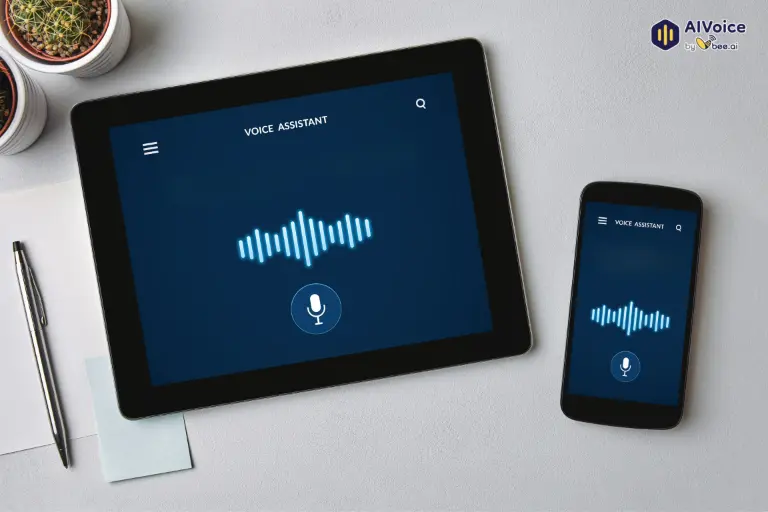French Text-to-Speech (TTS) has evolved from robotic voices to natural, AI-driven speech that captures the nuances of the French language. In this article, we’ll explore how French TTS works, the challenges of accents and pronunciation, the most popular tools available, and how it’s being used across education, media, and business in 2025.
(Making Text to Voices French: Synthèse vocale français en ligne)
1. Introduction of French TTS
Text-to-Speech (TTS) technology uses artificial intelligence and natural language processing to convert written text into natural-sounding speech. This sophisticated technology analyzes linguistic patterns and contextual nuances to create audio output that closely mirrors human speech characteristics.
French TTS holds exceptional significance in today’s interconnected world. With over 300 million French speakers across France, Canada, and Francophone Africa including Senegal, Côte d’Ivoire, and Morocco, French represents one of the world’s most geographically diverse languages. This global distribution creates unprecedented opportunities for businesses, educators, and content creators seeking to reach French-speaking audiences worldwide.
The applications extend far beyond simple text conversion. In education, TTS helps students master complex French pronunciation patterns. Content creators leverage TTS to produce podcasts, audiobooks, and videos for French-speaking markets without expensive native voice talent. Businesses expanding into Francophone territories utilize TTS for customer service automation and marketing campaigns.
2. Distinctive Features of French TTS
French presents unique linguistic challenges that make TTS implementation particularly complex and fascinating.
Complex Pronunciation Patterns
- Liaison Intricacies: French liaison involves pronouncing normally silent consonants when followed by vowels. For example, “les amis” (the friends) becomes “les-zamis” with the ‘s’ linking to the following vowel, while “les garçons” maintains the silent ‘s’. TTS systems must analyze grammatical relationships and formality levels to determine appropriate liaison usage.
- Nasal Vowels: French contains four distinct nasal vowels (an, en, in, on) that don’t exist in many languages. The subtle differences between “vent” (wind), “vain” (vain), and “vin” (wine) rely entirely on nasal vowel distinctions.
- Silent Letters: French orthography contains numerous silent letters whose pronunciation varies based on context. Words like “parfait” end in a silent ‘t’, while “respect” maintains its final consonant sound.
Diverse Regional Accents
- Metropolitan French: Parisian French serves as the traditional standard with specific vowel systems and rhythm patterns.
- Canadian French (Québécois): Features distinctive vowel pronunciations, unique rhythm patterns, and specific vocabulary requiring specialized modeling approaches.
- African French: Incorporates influences from local languages, creating unique pronunciation patterns that vary significantly between countries like Senegal, Côte d’Ivoire, and Morocco.
Emotional Expression and Context
Modern French TTS must convey appropriate emotions and adapt to different contexts. French’s rich prosodic patterns make this challenging, as emotional expression relies on subtle changes in vowel quality and rhythm variation rather than simple pitch adjustments.

3. Leading French TTS Tools: Comprehensive Comparison
3.1 Vbee AIVoice: Balanced Excellence
Vbee AIVoice offers five distinct French voices with particular strength in Canadian French Text-to-Speech capabilities. The platform provides natural-sounding output with excellent pronunciation accuracy, competitive pricing, and user-friendly interface suitable for educational content and small business applications.
Vbee AIVoice provides 5 male/female Natural reader French TTS voices. In addition, it also provides voice variations of French depending on the region. Listen to the demo French voices below.
| Adalen | |
| Adrien | |
| Adalicia | |
| Advent | |
| Adalie |
Utilizing Vbee Text to Speech simplifies the process of generating video and audio content with realistic sound from written text. To initiate the conversion from text to audio, simply choose French Text To Speech voice online from our selection of both male and female options.
3.2 ElevenLabs: Premium Quality Leader
ElevenLabs offers 15+ French voices with exceptional naturalness and advanced emotional control. Features include sophisticated emotion settings (whisper, excited), multiple output formats (MP3, WAV), and excellent support for Québécois and African French accents. While premium-priced, it delivers unmatched quality for professional content creation.
3.3 Murf AI: Professional Content Platform
Murf AI provides professional-grade voices with 20+ accent variations and seamless video editing integration. Ideal for advertising and marketing content, though commanding higher pricing.
3.4 Speechify: Education-Focused Solution
Speechify excels in educational applications with accurate Parisian and Québécois pronunciation modeling. Offers free basic tier making it accessible to students and educational institutions.
3.5 Open-Source Options: Tortoise TTS and Coqui TTS
These solutions offer complete customization for developers but require significant technical expertise and often produce less natural-sounding output.
French text to speech tools comparison table
| Platform | Voice Quality | Accent Support | Pricing | Best Use Case |
| Vbee AIVoice | Very Good | Canadian + Standard | Moderate | Balanced applications |
| ElevenLabs | Excellent | Multi-regional | Premium | Professional content |
| Murf AI | Very Good | 20+ variations | High | Marketing/Advertising |
| Speechify | Good | Educational focus | Freemium | Language learning |
4. Implementation Guide
Step 1: Text Preparation
Ensure proper French accents (é, è, à, ç) and appropriate punctuation. Pay attention to spacing around punctuation marks as French typography conventions affect TTS pacing.
Step 2: Voice Selection
Choose voices based on content type:
- Educational: Clear, moderate-paced voices
- Professional: Formal-sounding options
- Regional: Match accent to target audience
- Entertainment: Expressive voices with emotional range

Step 3: Parameter Customization
- Speed: 0.85x for academic content, 1.0x standard, 1.1x for news
- Pitch: Adjust for context and formality
- Emotion: Use whisper, excited, or formal settings as appropriate
Step 4: Quality Optimization
Review generated audio for pronunciation accuracy, liaison patterns, and emotional appropriateness before export in MP3, WAV, or other formats.
5. Real-World Applications
- Educational Applications: French TTS revolutionizes language learning by providing consistent pronunciation models for DELF/DALF exam preparation, pronunciation training, and accessibility enhancement for visually impaired students.
- Digital Content Creation: Content creators use TTS for podcast production, YouTube videos, and audiobook creation, enabling rapid localization for French-speaking markets.
- Business Applications: Companies deploy TTS for customer service automation, marketing voice-overs, corporate training materials, and e-commerce integration.
- Healthcare and Government: TTS serves in medical information systems, public transportation announcements, emergency response systems, and digital government services ensuring accessibility compliance.
6. Future Trends and Recommendations
Emerging Technologies
- Multi-accent integration seamlessly blending regional variations
- Voice cloning for personalized business applications
- AR/VR integration creating immersive language learning experiences
Selection Recommendations
- For Individuals: Start with Vbee AIVoice for balanced quality and cost, upgrade to ElevenLabs for premium requirements.
- For Businesses: Consider Murf AI for marketing applications, ElevenLabs for high-quality content, or enterprise solutions like Google Cloud for scalability.
- For Educators: Prioritize Speechify for language learning applications or Vbee for Canadian French support.

7. FAQ about French Text To Speech
7.1 Does Vbee French Text To Speech support both male and female voices?
Yes. Vbee offers a wide variety of natural French voices, including both male and female options, suitable for various use cases.
7.2 Can French Text To Speech generate regional accent voices?
Yes. In addition to standard French voices, Vbee provides French voices with regional accents, such as Canadian French.
7.3 Is Vbee French TTS suitable for movie or video voiceovers?
Absolutely. Its natural and expressive voices make your voiceover videos more professional and engaging.
7.4 Can French Text To Speech be used for creating audiobooks?
Yes. You can use Vbee to produce French audiobooks with clear and expressive narration.
7.5 Can I adjust the speed and pitch of the French voice?
Yes. Vbee allows you to customize the speed, pitch, and volume of the French voice according to your needs.
French TTS technology has evolved into an indispensable tool for global communication, education, and business expansion. With over 300 million French speakers worldwide, the technology bridges cultural and linguistic gaps while preserving regional variations and cultural authenticity.
The current landscape offers solutions for every need and budget, from Vbee AIVoice’s balanced approach to ElevenLabs’ premium quality. As the technology continues advancing with AI integration and regional accent support, French TTS will become even more natural and accessible.
Success lies in understanding specific requirements, testing multiple platforms, and choosing solutions that match intended applications and target audiences. Whether for education, business, or creative content, French TTS technology opens doors to the diverse and vibrant Francophone world.

